Introduction

After the license raj ended, foreign brands and new designs started to come in multitudes. Car body designs suddenly took a progressive route and started to spawn various different architectures.
Foreign culture had started to find mainstream influence. Superstars like Pierce Brosnan who starred in his first James Bond movie known as GoldenEye started to really become huge international hits including in India. Then came Jurassic Park, Godzilla, the WWF/WWE shows, Small Wonder and other American Family shows on national televisions. TV had become the ultimate source of influence to shape one’s way of living and thoughts.
Naturally, cars had started to become a necessity for the commute. The Maruti 800 was always there as a car everyone could buy, but there needed to be other options as well. The Omni wasn’t exactly the choice for a person looking for something similar to the 800. It started to be seen as the poor man’s car. While the 800 represented the entire hatchback segment comprising just three cars, the other two being the Sipani Dolphin and the quasi hatchback Maruti Omni, the entire hatchback segment would now be relegated to being an affordable and practical choice, rather than having an aspirational value.
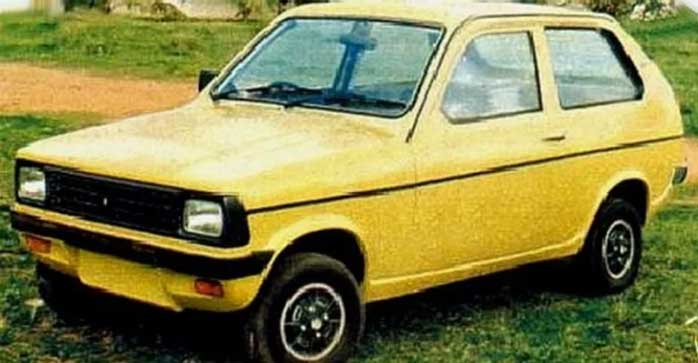
Sipani Dolphin
(Image source)

A Maruti Omni seen with a Maruti 800
(Image source)
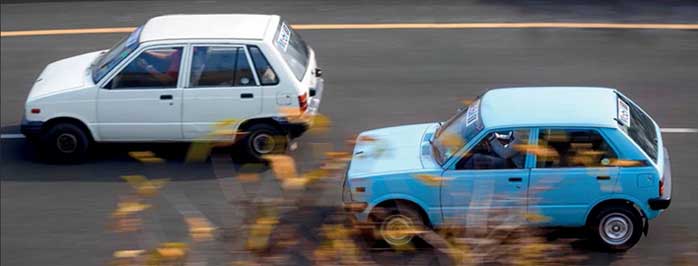
Old and New Maruti 800
(Image source)

Sipani Rover Montego
(Image source)

By this time the Maruti 800 had also received a facelift
(Image source)
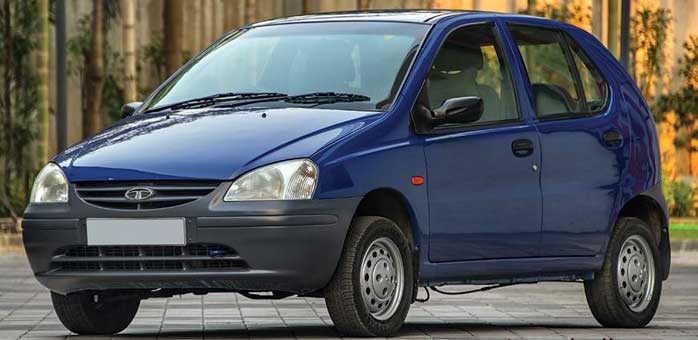
Tata Indica, the big hatchback was available at a price similar to the Maruti Suzuki Zen
(Image source)
1993 - Maruti Suzuki Zen
Zen was introduced to challenge exactly that. It had a larger 1 L engine and had already made a name for itself as being one of the most rounded designs in the first half of the 1990s. It was generations ahead in terms of design when compared with sedans like the Premier Padmini and Rover Montego.
While the Zen did present itself as a funky and fashionable option for the small car buyer, what it needed to do most is offer space that would really allow the small car buyer to feel as dignified as someone looking for a sedan.
Big cars with big footprints like the Fiat Uno, Palio and the Indica allowed consumers to feel like riding on a much larger car.
The tallboy designs like the Matiz, Santro and WagonR took space and visibility very diligently and offered a great viewing space. They were good options for the mature audience who seemingly didn’t want to bend over while entering. The ingress/egress was as convenient as compact SUVs like the Jeeps and Maruti Gypsys.

Maruti Suzuki Zen
(Image source)

Maruti Zen Front Three Quarter View
(Image source)

Maruti Zen Rear Three Quarter View
(Image source)

Maruti Zen Side Profile
(Image source)
The Maruti Zen was a larger derivative of the Maruti 800, and also the global version of its successor. Known as the Alto Cervo/Cervo Mode overseas, the Zen had a longer front overhang due to carrying a larger 1 L engine.
It had curves, instead of geometrical edges. This made the car look more organic and lively compared to other cars available at the time. The rounded corners gave birth to the nickname enthusiasts lovingly called ‘’the jellybean’. For its time, the Zen truly was a looker and made the Mercedes Benz E Class of the same year feel ‘boxy’ and prehistoric. Thus, it became a landmark in terms of manufacturers putting serious effort into exterior designs of smaller cars.

Maruti Zen Type 2 (Silver) and Type 1 (White)
(Image source)
Owning a Zen in the late ’90s was sensational. It was faster than the Maruti 800, offered a lower seating posture and allowed users to imitate a sports-car type experience. The Zen, even today is regarded in various enthusiasts’ circles as the poor man’s go-kart.
The Maruti Zen in its 1998 avatar brought about a subtle change which would justify a hatchback to have premium value – body-coloured bumpers. The body-coloured bumpers were previously only exclusive to sedans or limited to special edition versions of other segments.
1996 - Fiat Uno
The Fiat Uno was the first hatchback to have a length above 3.5 m and a diesel engine. This was the first time a manufacturer had tried to repackage a hatchback to be more than an economy car but rather an aspirational vehicle.

Fiat Uno front three view
(Image source)
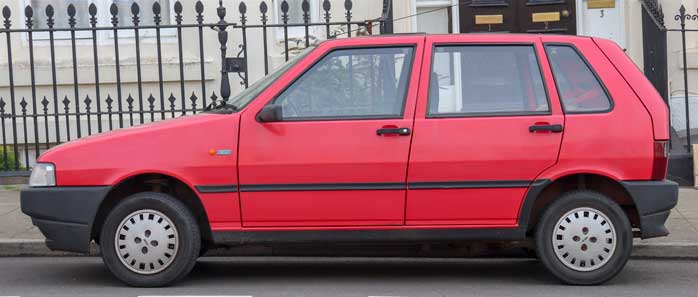
Fiat Uno Side Profile
(Image source)
1998 - Daewoo Matiz
The Matiz took a “rounded’ shape to another level. In fact, the original design was based on the European “Fiat Cinquecento”, designed by Fabrizio Giugiaro at Italdesign.
This was the first time a set of clear-lens headlamps was used in the hatchback segment. The Matiz had a taller architecture and offered decent headroom and legroom at the back. More space can be accessed if the rear seats are folded. The taller driving position gave the impression of driving a larger car.

Daewoo Matiz front three quarter view
(Image source)

Daewoo Matiz Rear Three Quarter View
(Image source)

Daewoo Matiz Front Headlight
(Image source)

Daewoo Matiz Side Profile
(Image source)
1998 - Tata Indica
The Tata Indica was the first indigenously developed car in the country. The vehicle was launched in 1998, with the tagline “More Car Per Car”, as the vehicle was similar in size to the Uno, but at the selling price of a Maruti Suzuki Zen. There were a lot of unique features on offers, such as a dashboard watch and protective bumper claddings.
It was also taller, at above 1.5 m, and allowed a total of 5 passengers to sit comfortably. The Indica was designed by IDEA Institute in Italy. It was also the first hatchback to offer a proper 5-passenger seat configuration.

Tata Indica front three quarter view

Tata Indica Front Three Quarter View
(Image source)

Tata Indica Rear Three Quarter View

Tata Indica Front Three Quarter View
(Image source)
1998 - Hyundai Santro
The Hyundai Santro was bulbous in appearance and boasted of providing a roomy interior. It was tall, at around 1.6 m in height, and that meant a person did not require to bend down much to get inside the car. It also provided a roomier interior, and a big glass area meant there was ample visibility.
The Santro still managed to be similar to the Matiz and Zen in terms of length, and hence was a better manageable car than both. While the Indica preferred to be wide and long, the Santro was taller and offered better ingress/egress.

Hyundai Santro front three quarter view
(Image source)
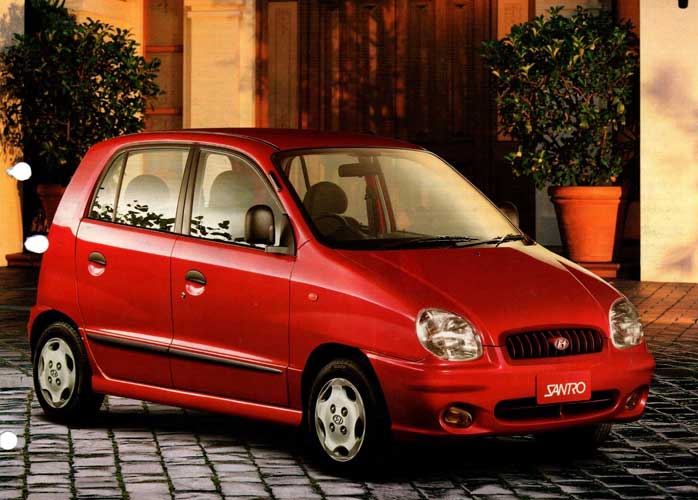
Hyundai Santro Front Three Quarter View
(Image source)

Hyundai Santro Rear Three Quarter View
(Image source)

Hyundai Santro Side Profile
(Image source)

Hyundai Santro
(Image source)
The Hyundai Santro Type 2 introduced rear spoilers for hatchbacks, a rear wiper and a segment-first set of fog lamps.
1999 - Maruti Suzuki WagonR
The WagonR was Maruti Udyog’s second attempt at offering a boxy people mover similar to the size of a hatchback. The WagonR, unlike the Maruti Omni, had a semi-cab forward design, and door opening mechanisms similar to a normal hatchback. It was essentially a taller and a boxier hatchback focused on providing space and improved ingress/egress. The roof rails were seen for the first time in a hatchback, and the WagonR promised to be a hatchback and a MUV rolled into one.

Maruti WagonR front three quarter view
(Image source)
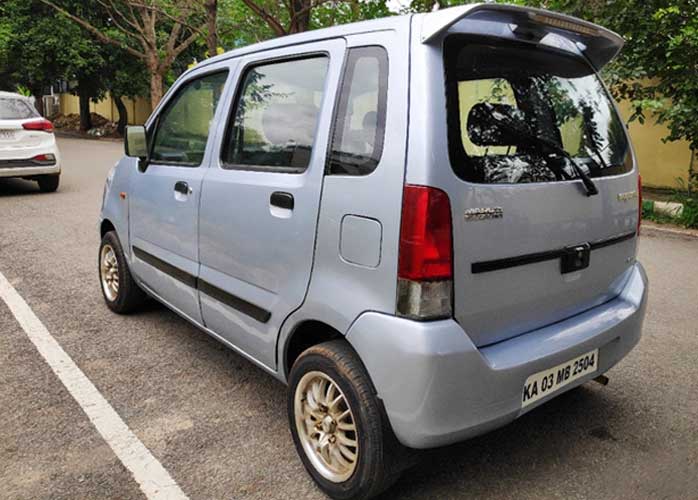
Maruti WagonR Rear Three Quarter View
(Image source)

Maruti WagonR frontThree Quarter View
(Image source)

Maruti WagonR Side Profile
(Image source)

Maruti WagonR Rear Split Folding Seats

Maruti WagonR Rear Folded Seats made a lot of space.
(Image source)

Maruti WagonR Rear Door Open
(Image source)
The WagonR also introduced split seats in a hatchback. The split seats made way for a lot of cargo space and justified the “Multi-Activity Vehicle” tagline.
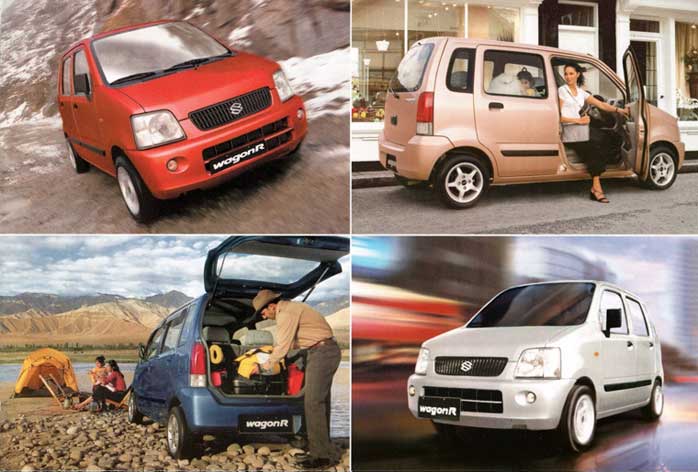
Maruti WagonR Advertisement Print from 2000
(Image source)
The Maruti Suzuki WagonR was strongly advertised as a Utility Vehicle, but positioned in the hatchback segment. This concept is successful to this day and may have contributed to the rise of the current Crossover Hatchback segment.
1999 - Maruti Suzuki Zen Classic
The Maruti Suzuki Zen Classic was an attempt at introducing neo-retro design which was gaining popularity in Japan. The cars at the time were the Mitsuoka Viewt, Subaru Impreza Casa Blanca and Daihatsu Mira.
As Kei cars were finding commercial success in India, the Zen Classic was an experiment to gauge consumer response to Japanese retro designs in India. It was not successful, and Maruti Suzuki continued selling the regular Zen.

Maruti Suzuki Zen Classic
(Image source)
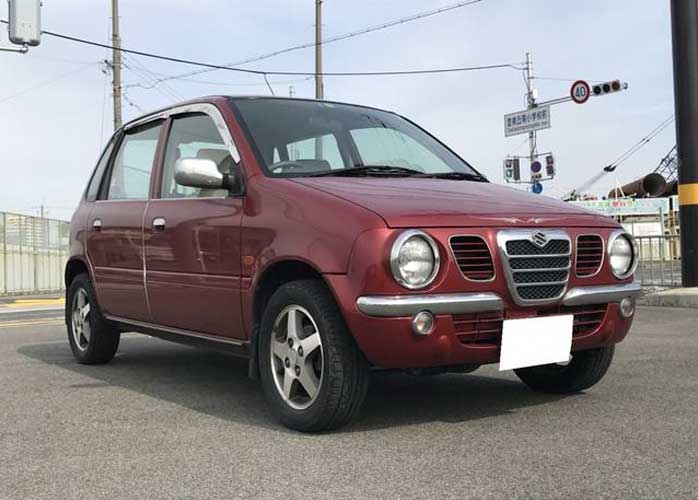
Maruti Zen Classic Front Three Quarter View
(Image source)
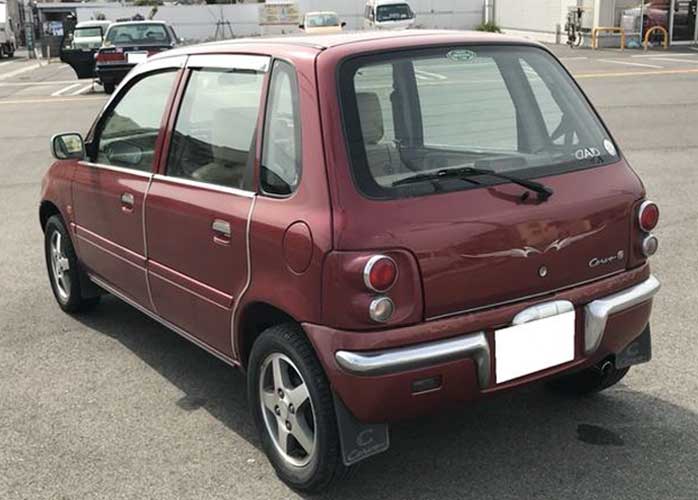
Maruti Zen Classic Rear Three Quarter View
(Image source)

Maruti Zen Classic Side Profile
(Image source)

